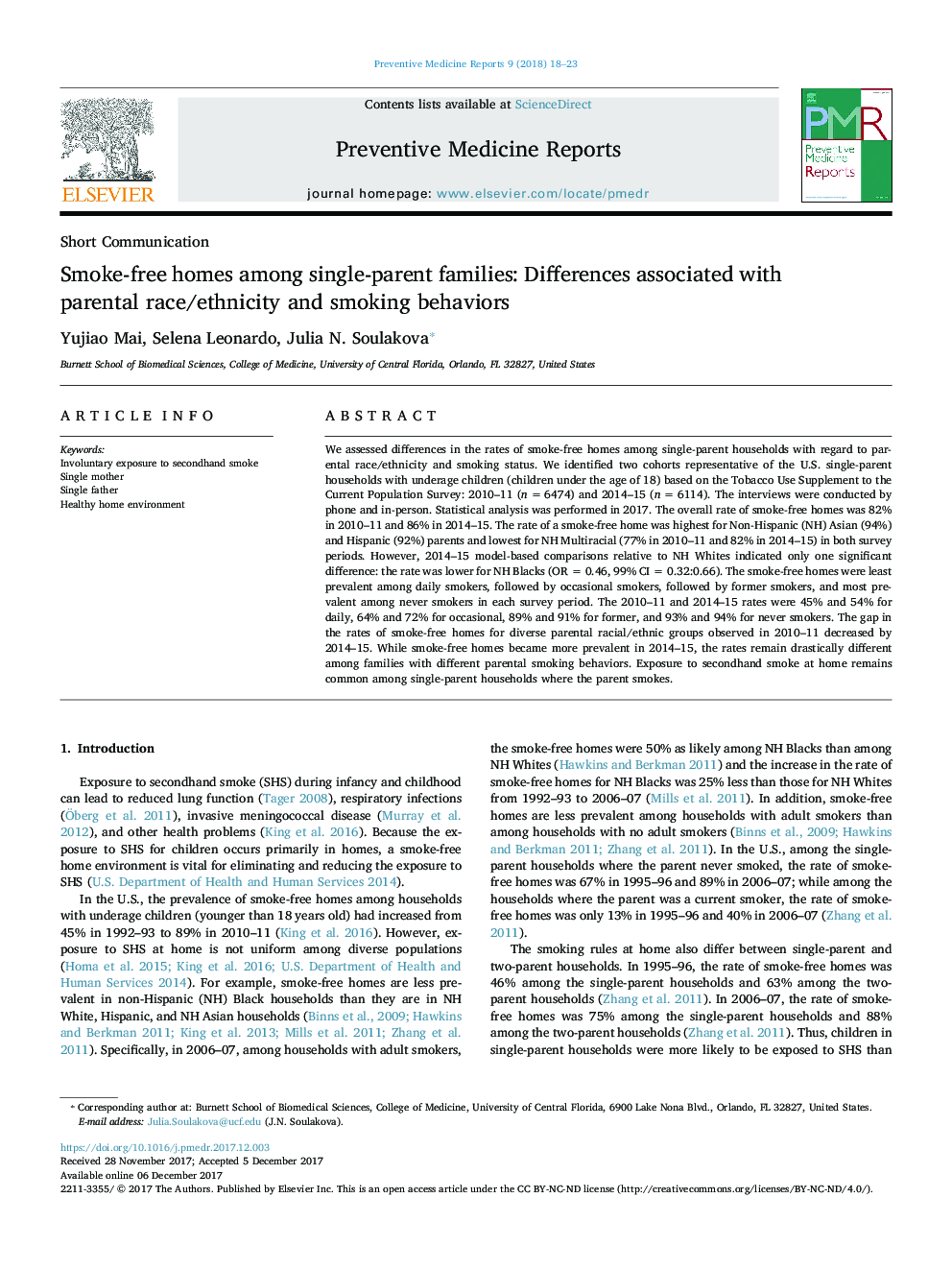| Article ID | Journal | Published Year | Pages | File Type |
|---|---|---|---|---|
| 8818684 | Preventive Medicine Reports | 2018 | 6 Pages |
Abstract
We assessed differences in the rates of smoke-free homes among single-parent households with regard to parental race/ethnicity and smoking status. We identified two cohorts representative of the U.S. single-parent households with underage children (children under the age of 18) based on the Tobacco Use Supplement to the Current Population Survey: 2010-11 (n = 6474) and 2014-15 (n = 6114). The interviews were conducted by phone and in-person. Statistical analysis was performed in 2017. The overall rate of smoke-free homes was 82% in 2010-11 and 86% in 2014-15. The rate of a smoke-free home was highest for Non-Hispanic (NH) Asian (94%) and Hispanic (92%) parents and lowest for NH Multiracial (77% in 2010-11 and 82% in 2014-15) in both survey periods. However, 2014-15 model-based comparisons relative to NH Whites indicated only one significant difference: the rate was lower for NH Blacks (OR = 0.46, 99% CI = 0.32:0.66). The smoke-free homes were least prevalent among daily smokers, followed by occasional smokers, followed by former smokers, and most prevalent among never smokers in each survey period. The 2010-11 and 2014-15 rates were 45% and 54% for daily, 64% and 72% for occasional, 89% and 91% for former, and 93% and 94% for never smokers. The gap in the rates of smoke-free homes for diverse parental racial/ethnic groups observed in 2010-11 decreased by 2014-15. While smoke-free homes became more prevalent in 2014-15, the rates remain drastically different among families with different parental smoking behaviors. Exposure to secondhand smoke at home remains common among single-parent households where the parent smokes.
Keywords
Related Topics
Health Sciences
Medicine and Dentistry
Public Health and Health Policy
Authors
Yujiao Mai, Selena Leonardo, Julia N. Soulakova,
